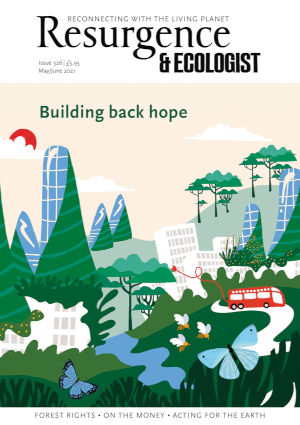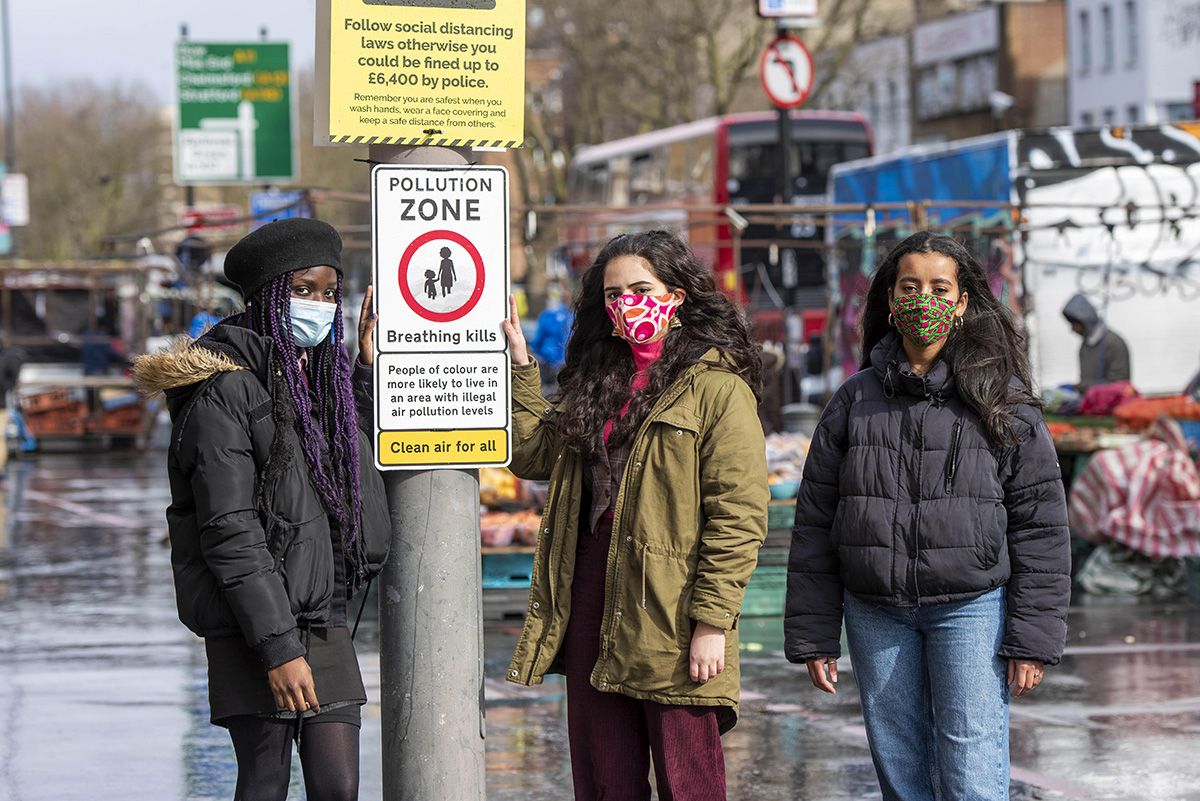A guerrilla campaign by young activists has highlighted how deprived areas and communities of colour are particularly affected by air pollution. In March this year, members of the campaign group Choked Up installed fake road signs saying ‘Pollution Zone’ and ‘Breathing Kills’ in some of the most polluted parts of London, including Catford, Whitechapel and Brixton.
Research by Environmental Defense Fund Europe published the same week shows that toxic nitrogen dioxide (NO2) pollution is on average 24–31% higher in areas where people from black, Asian or minority ethnic backgrounds are most likely to live. It also shows that the most deprived Londoners are over six times more likely to live in areas with higher pollution than the least deprived.
In Tower Hamlets, for example, where air pollution is among the worst in London, hospital asthma admissions for young children are 42% higher than the England average. The area also has the largest Bangladeshi population in England, which is why Choked Up’s signs in Whitechapel were translated into Bengali.
Choked Up was set up last year by a group of brown and black teenagers in response to growing concern about the health impacts of air pollution on their communities.
Seventeen-year-old co-founder Anjali Raman-Middleton told Resurgence & Ecologist that she decided to start campaigning on clean air because she lives in a highly polluted area of London. “It was something that I’ve had lived experienced of and I’ve seen the effect of growing up.”
Raman-Middleton went to primary school with Ella Adoo-Kissi-Debrah, whose death at the age of nine in 2013 was explicitly linked to air pollution by a coroner in a landmark ruling in December 2020. “It was horrible that it took something so tragic for the government to start taking it as seriously. They’ve seen that people actually care about this and are starting to mobilise on these issues and campaign for change. It has given a face and a voice to an otherwise faceless and invisible movement,” she said.
But despite living so close to the South Circular – the busy road Ella lived near – she only learned about air pollution through her own research and from other clean air activists. “It was never really thought of when I was at school. Looking back I can see that it was having a major impact. So many people in my class had asthma – the majority had an asthma puff – and obviously now I see that as a red flag that the air pollution was having such a remarkable effect on us.”
Raman-Middleton says there is a risk of “whitewashing” clean air campaigns. “I truly do believe that we can’t solve the issue of clean air without addressing the social justice aspects of it. We need to be fighting for clean air for all, not just clean air for some people. And if we overlook the race and class aspects of this we’re really not achieving that.”
The Choked Up campaign was accompanied by a letter, signed by around 100 NHS medics in London and organised by Medact, supporting calls for action to reduce air pollution. They warn that air pollution is having a “devastating impact” on health, particularly in communities of colour and people from deprived backgrounds.
In the run-up to London’s mayoral election in May this year, Choked Up and the medics have urged candidates to commit to tackle air pollution inequalities.
Follow Chocked Up on Twitter @ChokedUp_UK







